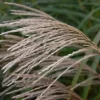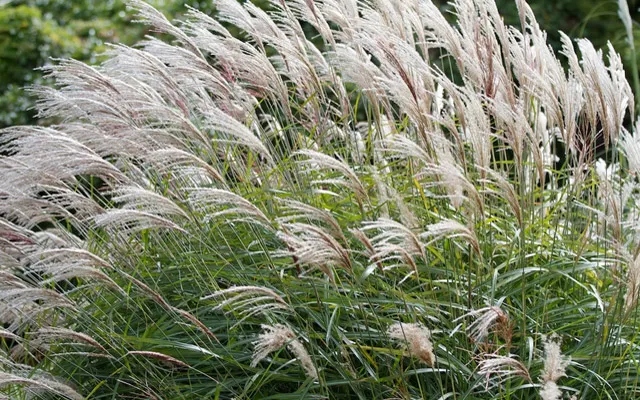X
CONTACT US
Great Lakes Center, SAMC 319
SUNY Buffalo State
1300 Elmwood Ave., Buffalo, NY 14222
wnyprism@buffalostate.edu
(716) 878.4708
SUBSCRIBE TO LISTSERV
FOLLOW US
CONTACT
Chinese Silver Grass
COMMON NAME:
Chinese silver grassSCIENTIFIC NAME:
Miscanthus sinensisORIGIN:
AsiaDESCRIPTION:
Introduced as an ornamental, chinese silver grass comes in a variety of cultivars. This perennial grass grows in clumps. The stalks can reach 5-10 ft., and have alternate leaves that may be 40'' long and 1'' wide. The flowering head of chinese silver grass may be drooping or upright and will produce red, pink or silver blooms. Many cultivars produce seed, but its primary mode of reproducing and spreading is through rhizomes.HABITAT:
Chinese silver grass can tolerate a wide variety of temperature ranges and soil types. In its native range, chinese silver grass grows in grasslands affected by fire and volcanic ash. In North America, it is found mostly in human-disturbed areas such as fallow fields, irrigation ditches and roadsides, though it has also been found in forest margins.THREAT:
Chinese silver grass rapidly spreads in areas that have been disturbed, such as roadsides. It is considered a wildfire hazard because it produces large amounts of highly flammable, dry plant material.MANAGEMENT:
Smaller patches can be removed manually, as long as all of the root is dug out of the ground. Larger infestations may be treated with herbicides. Burning is not effective, and will help chinese silver grass spread.
WNY PRISM PRIORITY:
Tier 5a - Survey
ADDITIONAL RESOURCES:
Chinese silver grass is a regulated species in New York State - for more information on Prohibited and Regulated Species, visit http://www.dec.ny.gov/animals/99141.html.
Native Alternatives
Prairie cord grass (Spartina pectinata)
Big bluestem (Andropogon gerardii)
Indian grass (Sorghastrum nutans)
Bluejoint grass (Calamagrostis canadensis)
NYS Prohibited and Regulated Species - Part 575:
PATHWAYS OF INVASION:
REGIONAL DISTRIBUTION:
Unknown




